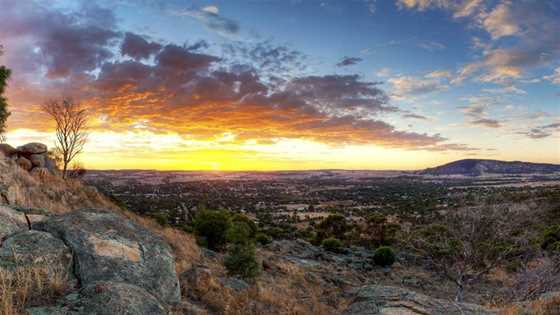To mark the bi-centenary of Spanish monk Rosendo Salvado's birth, his story is told through a series of themes illustrated with photographs and objects.
In February 1846, two Spanish monks, a French novice, an Irish catechist and an English monk left the 17-year-old settlement of Perth on the same journey north. After five days they had covered 100km and reached the home of Captain Scully at Bolgart. By March 1, they had trekked another 60km through rough country and their leader, 32-year-old Spanish monk Rosendo Salvado, said mass and laid the foundation of a monastery by the Moore River. With extraordinary energy, they completed the first building by July 9, and by mid-December had opened
a school for Aboriginal boys.
Working with the local Yued people of the Nyoongar nation, Salvado and his fellow monks created a community that flourished when so many others failed. To succeed, he knew it was important to create a self-sufficient community and his entrepreneurial spirit set the course through a focus on wool production. By the late 1880s his flock of sheep grew to more than 17,000 over a massive 391,331ha, and his Aboriginal shearers could shear 80 to 100 a day – well over the average achieved by European shearers. The community expanded rapidly, more than 250 at its peak in 1885, including 70 Spanish monks.
To mark the bi-centenary of his birth, Salvado's story is told in the exhibition In Search of Rosendo Salvado, currently showing at the New Norcia Museum and Art Gallery through a series of themes illustrated with photographs and objects. Most important was the relationship he built with the Yued people, but one of the remarkable aspects of the community was its role as a cultural centre in the colony. Fine vestments, an 18th century painting of Our Lady of Guadalupe that Salvado brought back from Rome, and a veritable flood of books, artworks and religious objects made their way to New Norcia. One of the most significant is the wonderful portrait St Jerome and the Dream of the Last Judgement, attributed to Giacinto Brandi (1623-1691), which depicts the hermit in his cell at the moment he hears the trumpet announcing the last judgment. Another is the beautiful The Holy Family, attributed to Giovanni Bernardino Azzolini (c1572–1645), which unfortunately was damaged when it was cut from its frame during an art theft in 1986.
Because of this rich resource the town is a veritable treasure trove for researchers and scholars, many of whom contribute to the annual New Norcia Study Day seminars. As well as the historical works and the invaluable archives, the Mandorla Art Prize for contemporary religious art has seen significant contemporary works added to the collection since 1985. This now includes major works by John Coburn, Nigel Hewitt, Brian McKay, Julie Dowling, Michael Kane Taylor, John Paul and Julian Poon.
After a two-hour drive from Perth it's extraordinary to find a Spanish township materialising before your eyes. The domed steeple of the Abbey Church surrounded by palm trees, a walled monastery, St Gertrude's and the crenellated St Ildephonsus College, the old flourmill and the neoclassical facade of the hotel rise up out of nowhere. Even more exciting are the artworks and the stories of hardship and resilience documented within.









